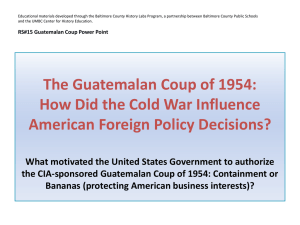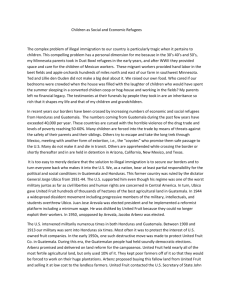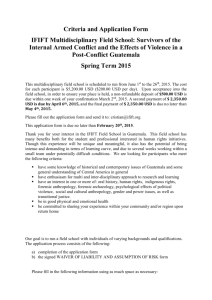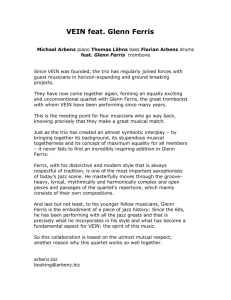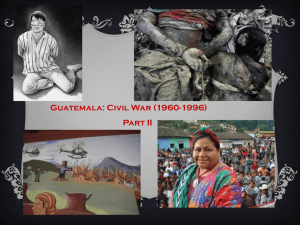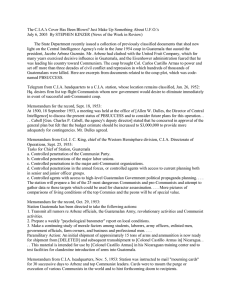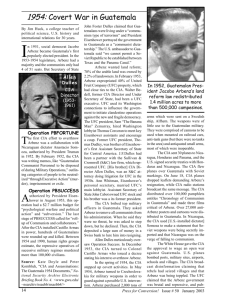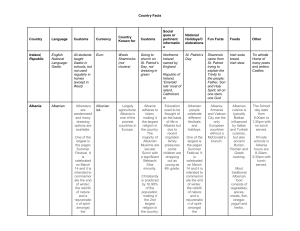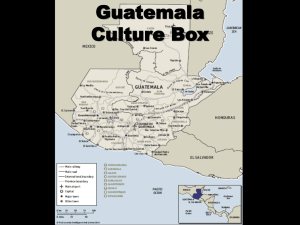Latin America After WWII
advertisement
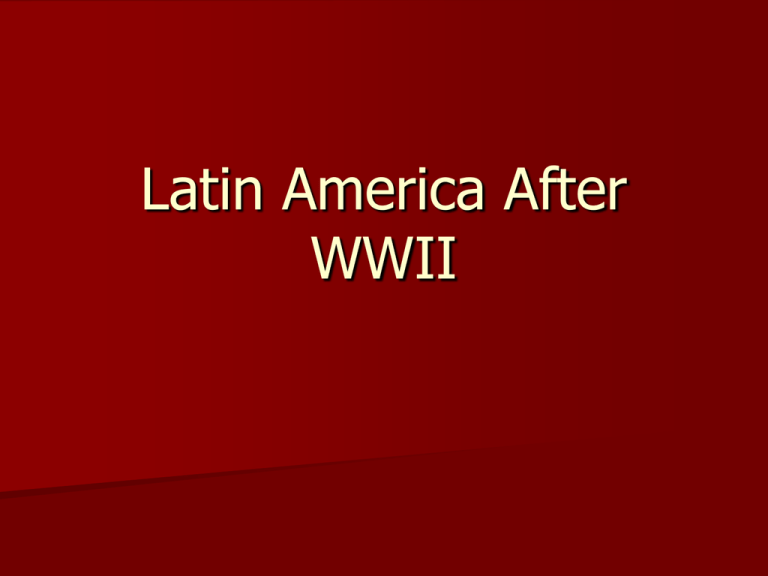
Latin America After WWII IB Objectives Spread of Cold War from Europe US Foreign Policy during the Cold War Key Terms OAS Colonel Jacobo Arbenz Guzman Operation Success Alliance for Progess Lecture Outline Effects of the Cold War A. OAS B. Guatemala C. Alliance for Progress D. the role of the Church II. Latin America’s economy I. OAS 1948 the US took the lead in creating the Organization of American States. There were 21 countries initially but all 35 independent countries of the Americas are now members. Primary purposes include: strengthening democracy; defending human rights; promoting sustainable development; and common defense. Guatemala 1950 Colonel Jacobo Arbenz Guzman was elected president of Guatemala. 2% of Guatemalans controlled 74% of the nation’s farm land. 1952 a law is passed which 223 acres of land was to be expropriated by the Guatemalan government and distributed to the landless. Arbenz paid the United Fruit Company $600,000 for its 550,000 acres. Guatemala 1953 President Eisenhower approved a plan to overthrow Arbenz. May 1954 Czech weapons landed in Guatemala in violation of US imposed arms embargo and the US used it as pretext for initiating Operation Success— the planned coup d’etat against Arbenz. Guatemala Arbenz was overthrown and a new president hand picked by the US was put into power. The 1952 land reform act was revoked and the United Fruit Company regained its lands. Alliance for Progress 1961 President Kennedy created the Alliance for Progress whose goal was to relieve poverty and social inequities. The US agreed to commit $20 billion to the program over a 120 year period. It was dissolved in 1973. Catholic Church 1950s the Church began to compete with Communists for the support of the masses. In the 1970s the Church began to be a champion of individual human rights in an attempt to protect the people from both political extremes. Christian Democratic Parties were created. In July 1980 Pope John Paul II forbade the clergy from holding political office. Debt By 1982 Latin American debt was over $315 billion with Brazil owing $87.5 billion and Argentina $43.6 billion. Prices of locally produced manufactured goods were often 300% above the world price. 1980-1984 overall growth in Latin America dropped by about 9%. Total burden of debt increased by about 9% per annum. By 2003 all the countries of Latin America except Cuba where under some form of elected government. LA p. 440-455 Fidel Castro Fundamental Law of the Republic Bay of Pigs Invasion Cuban Missile Crisis Law of Agrarian Reform Second Agrarian Law Cuban Women’s Federation Torricelli Act Helms-Burton Act
